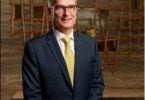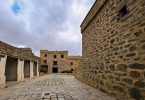After Christians celebrated Easter Sunday, eTurboNews draws attention to the Coptic religion and its rich arts and cultural heritage.
Mamdouh Halim of Al Qahirah in Egypt explains that there has been a deep influential factor of the ancient Egyptian life on the distinguished religious music of the Coptic Orthodox Church since it was first founded by St. Mark the Evangelist in the first century AD.
“The Coptic Church is an ancient Egyptian glory,” Egypt’s prominent thinker Dr. Taha Husayn said about the dominant Christian church.
Furthermore, Halim believes that the spiritual music of the church is the richest in the entire world, as it somehow revives similar music to that once performed in the Pharaonic era. After the Copts adopted the new faith, Christianity, the grandchildren of Pharaohs were inclined to compose their own spiritual songs on the basis of pre-existing music from their time, added Halim.
In the 1990s, the church decreed a ban on the use of musical instruments, except for tambourines and other primary instruments, in order to distract the attention of Roman authorities who at the time were persecuting Christians. They decided instead to depend on the power of their larynx. Until today, the church plays hymns depending on ancient Egyptian tunes, especially during the Passion Week where they perform music, typical of funereal ceremonies thousands of years ago.
Similarly, the Coptic Museum is a rendition of the Coptc vibrant spirit on their works of art. The Coptic Museum in Cairo in fact, initially started as a church museum until its founder Marcus Simaika Pasha, tirelessly and with great determination and sense of vision, undertook the creation of the full fledged Coptic Museum in 1908.
In 1910, the Coptic museum in Egypt’s capital was opened. It contains several divisions that present several types of Coptic Art. Most valuable possessions of the museum are the ancient icons which go back to the 12th century. Aside from the exotic artefacts from 200-1800 AD showing ancient Egyptian influence on early Christian design (such as the Christian crosses developed from the Pharaonic Ankh or key of life), the museum has ancient illuminated manuscripts such as the 1,600-year-old copy of the Psalms of David. In addition, the oldest known stone pulpit from the St. Jeremiah monastery in Saqqara belonging to the 6th century is being kept there.
Significantly, of the four main museums in Egypt, the Coptic Museum is the only one to be founded by Simaika Pasha. He did not only wish to collect precious artefacts but also ensured that they were housed in a physical environment which was in harmony with the culture that they represented. The recent renovation of the museum honors the memory of Pasha.
In 1989, the Coptic Museum in Cairo began a project restoring the icons in cooperation with Dutch citizen Susanna Shalova. Consequently, the Coptic Orthodox Church and the Supreme Council of Antiquities supported a major project counting, dating and reviewing more than 2000 icons. This project was funded by the American Research Center.
Emile Hanna, a restoration expert at the Coptic museum, said as many as 31 icons from the Coptic Museum have been restored in compliance with the principles of the old school of restoration, despite difficulties in restoring the 17-19th century exhibits.
In the days when Simaika Pasha thought about building the Coptic museum in Old Cairo district, he chose motifs that were used on the façade of the famous Al-Aqmar mosque. This confirms the harmony that bonds the Egyptian religions and civilizations. The harmony, however, did not prevent the lofty competition between the exhibitions of Pharaonic monuments and Coptic monuments. The latter, in addition to holding historical value, also holds religious and spiritual value, stories of saints and symbols of the Coptic Orthodox faith, which makes Coptic monuments no less valuable than the Pharaonic ones.






















